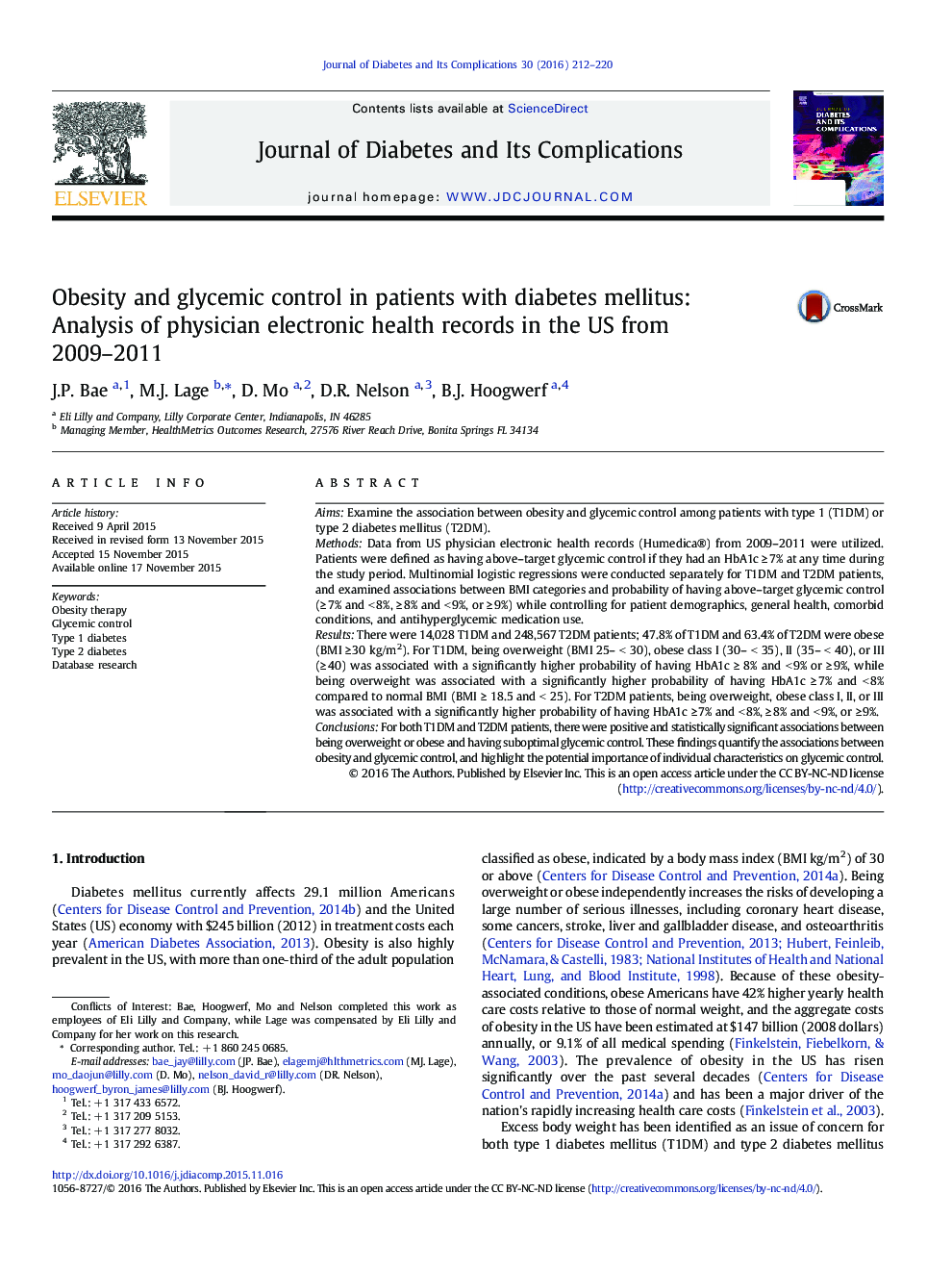| Article ID | Journal | Published Year | Pages | File Type |
|---|---|---|---|---|
| 5902130 | Journal of Diabetes and its Complications | 2016 | 9 Pages |
AimsExamine the association between obesity and glycemic control among patients with type 1 (T1DM) or type 2 diabetes mellitus (T2DM).MethodsData from US physician electronic health records (Humedica®) from 2009-2011 were utilized. Patients were defined as having above-target glycemic control if they had an HbA1c â¥Â 7% at any time during the study period. Multinomial logistic regressions were conducted separately for T1DM and T2DM patients, and examined associations between BMI categories and probability of having above-target glycemic control (â¥Â 7% and < 8%, â¥Â 8% and < 9%, or â¥Â 9%) while controlling for patient demographics, general health, comorbid conditions, and antihyperglycemic medication use.ResultsThere were 14,028 T1DM and 248,567 T2DM patients; 47.8% of T1DM and 63.4% of T2DM were obese (BMI â¥Â 30 kg/m2). For T1DM, being overweight (BMI 25- < 30), obese class I (30- < 35), II (35- < 40), or III (â¥Â 40) was associated with a significantly higher probability of having HbA1c â¥Â 8% and < 9% or â¥Â 9%, while being overweight was associated with a significantly higher probability of having HbA1c â¥Â 7% and < 8% compared to normal BMI (BMI â¥Â 18.5 and < 25). For T2DM patients, being overweight, obese class I, II, or III was associated with a significantly higher probability of having HbA1c â¥Â 7% and < 8%, â¥Â 8% and < 9%, or â¥Â 9%.ConclusionsFor both T1DM and T2DM patients, there were positive and statistically significant associations between being overweight or obese and having suboptimal glycemic control. These findings quantify the associations between obesity and glycemic control, and highlight the potential importance of individual characteristics on glycemic control.
